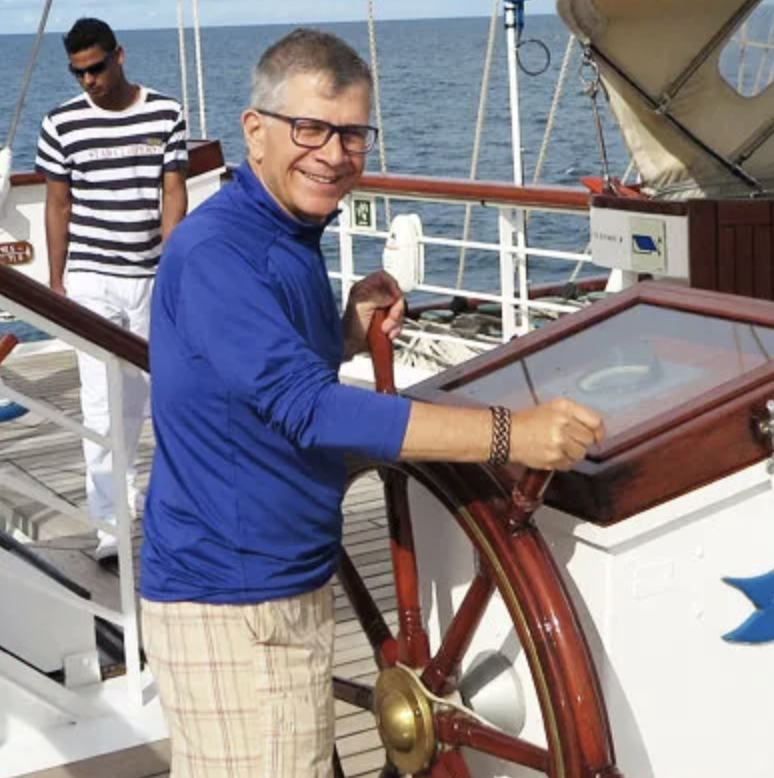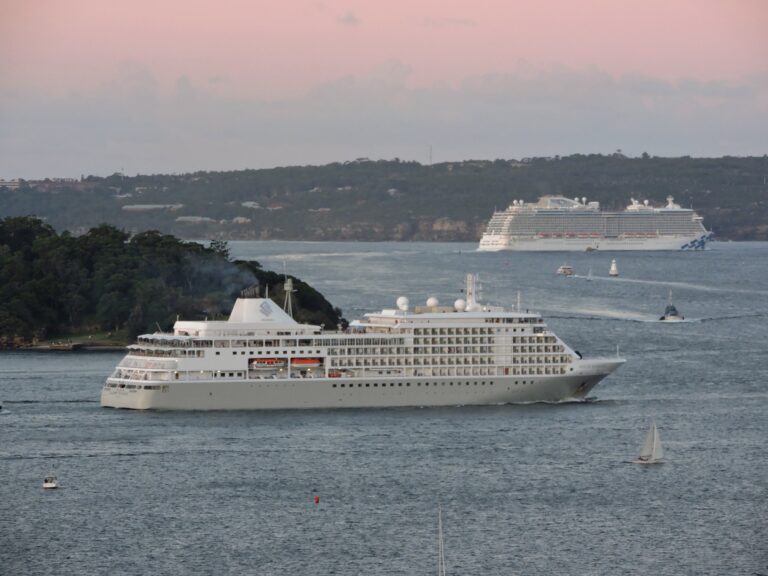The body representing ship owners is preparing to mount a major cruise industry campaign to persuade governments in the region to bring down costs and relax regulations.
The move comes after Cruise Passenger revealed that the number of ships, cabins, and suites being offered to Australian cruisers in our own waters is heading for a cut of 30 per cent, despite record demand.
Lines are heading for waters where there is more certainty and less regulation – the Caribbean and Europe.
It’s bad news for the Australian economy. Home-ported cruise ships contribute $5 billion in goods, services, employment, food, wine, and produce – as well as spending in ports by local and overseas passengers.
Today, we reveal just how high port charges are and why they are helping deter vessels coming to Australia.
But it costs huge sums to homeport ships in Australia – port charges are triple those of popular rivals. Important regulations like an exemption from the Coastal Trading Act, which has been rolled over since 2019 on an annual basis, add a level of uncertainty.
Removals of the exemption would mean massive cost increases – but Minister Catherine King’s office declined to tell Cruise Passenger whether it would be renewed this year, maintaining it was “still under consideration”.
Cruise Lines International Managing Director Joel Katz wrote this week: “High operating costs and inconsistent regulations deter new ship deployments and strain existing operations.
“Recent announcements suggest that while 2024-25 capacity in our market will be similar to the 2023/24 season, future reductions are likely due.”
Katz maintains CLIA and cruise lines are advocating federal governments across Australia and New Zealand for more supportive policies.
“These include calls for competitive cost structures and streamlined regulations that balance safety and environmental protection with industry needs.”
Katz urged travel agents to write to state and federal MPs and speak to local media to advocate for the cruise industry campaign
“By joining forces we can push for the necessary regulatory certainty and ensure we remain a top choice for cruise lines.”

Down Under docking dilemmas: The background for the cruise industry campaign
Despite a surge in demand for cruises from Australia, several major cruise lines are scaling back their presence, among them Virgin Voyages, Cunard, Royal Caribbean, and Princess Cruises. Why?
Cost Concerns: Operating cruise ships is expensive, and Australia presents unique challenges. The distance from major cruise hubs adds to repositioning costs. Additionally, the Australian dollar’s value compared to other currencies can make profit margins tighter.
Virgin Voyages cited the ongoing conflict in the Red Sea as the reason for their complete withdrawal. However, industry analysts believe operational cost concerns likely played a role too, especially for a new line trying to establish itself.
Cunard’s decision to pull out their flagship Queen Elizabeth aligns with these cost pressures.
Shifting Strategies: Cruise lines deploy their ships strategically to maximise profitability. Royal Caribbean, for instance, is replacing Quantum of the Seas with Voyager of the Seas. While both are large ships, Voyager caters to a slightly different demographic and may be a better fit for the Australian market. Princess Cruises is also undergoing a reshuffle, with some ships being replaced by newer, more efficient vessels.
Demand Doesn’t Equal Profitability: While there’s a clear desire for cruises from Australia, it may not be enough for every ship. Cruise lines need to ensure enough passengers are booking at premium prices to justify deployment.
The Future of Cruising Down Under: This reduction doesn’t necessarily signal a permanent retreat. Cruise lines are known for adjusting deployments based on market trends. As the Australian cruise industry matures and the economic climate changes, we might see a return of these large ships.
In the meantime, Australian cruisers will still have a good selection of ships and itineraries to choose from. The industry is constantly evolving, and these changes could pave the way for more specialised cruises catering to specific interests.
So, while the number of mega-ships might be decreasing, the future of Australian cruising could be full of exciting possibilities.










It seems that almost everything this Government has touched, they have stuffed up. Leave or even cut the red tape to help the Cruise Industry. If they tinker with the go to there will be less beds for cruises and what that are available will be more costly.
As usual, any time government gets involved with an industry, the industry and their customers suffer. And the bigger issue for Australians is that even if we choose to fly and cruise, the process of getting to the overseas port is far from cheap and far from easy. For us, we need a flight from a country town to Sydney, followed by an overnight, then a long haul flight to Europe or Asia (having done NZ too many times already) and ANOTHER overnighter once we arrive. Then of course taxis from airports to hotels and hotel to sea port. And then probably the same again coming home. Apart from the cost, it is such an unpleasant routine to go through.
If only we had politicians with brains or the idiots we do have would leave the industry alone!
We need cruise ship leaving from NewZealand
Cruising Oz/Nz its imperative to get more ships back here.
Pleeeeez Richard Branson……find a way to come back to Oz/Nz…..there are thousands and thousands of people wanting Virgin downunder!!
haaaaate cruise ships – toooobig, hideous,visual blight, environmental catastrophe, destroy amenity of small communities everywhere they dock!!! Ban them everywhere
They need to make it easier for cruise ships to come here as we are far from most country’s and we need people from around the world to visit our part of the world
I guess the cruise industry also has a role to play to improve a two-way relationship, such as increase intake of local workforce (currently 18,000, considering over 2 million Aussie cruisers, the level of local employment is very low), improve the bill of passenger which is current biased towards US standards, and there are many escape clauses from liability upon passengers as it stands. UKC (Under Keel Clearance) dredging is also another substantial issue that the industry could consider in investing alongside the Government.
Your comment that Australian cruisers still have a good selection of ships and itineraries to choose from ignores Western Australia where there are very, very few cruises now.
P and O’s Pacific Explorer is being scrubbed and it was the only one of their ships which came to WA. The other 2 ships are still servicing Sydney and Brisbane under Carnival as they did with P and O.
Princess post-COVID only has the occasional cruise which goes around Australia from Sydney. Pre-COVID they used to cruise from Perth to Asia including over the late autumn/winter/spring months which is the best weather in Asia. The only cruise from Perth to Singapore is in September 2024 when Coral Princess goes there for a dry-dock then sails off to America, to be replaced by Crown Princess which does cruise between Perth and Asia.
The main ones which come are the very small, very expensive lines.
I would encourage Cruise Passenger to do more research on the environment of cruise and to not just publish what cruise industry bodies feed them to publish. For time eternity, large cruise ships have deployed where they can make the most profit. Best occupancy, best fares, cheapest labour, minimise tax, most lax regulations, fewer permits etc. Australia has never been a cheap destination but its population like cruise very much. The industry has convinced governments around the country to invest heavily in billions of $ infrastructure at ports with a promise of growth returns – which by its very nature means that taxpayers funds need to be recouped in port fees for the builds and dredging costs. User pays is a global concept, Australia is a safe and stable 1st world country and all businesses in Australia pay high costs. Why should cruise be exempt from this.
Facts are:
P&O is a Carnival corporate restructure based on profit maximisation. Happens with foreign multinationals all the time and sad to see it being used opportunistically by CLIA who are almost wholly funded by large foreign cruise lines.
The redeployments of ships are due to fact that the market down here is saturated and many of the lines leaving simply see more profit opportunity elsewhere. Too many came and Aussie market cant support all.
Keep the large cruise exemption in place BUT limit them from sensitive areas and also lift the size so that foreign expedition ships don’t kill Australia’s amazing expedition fleet
It saddens and disappoints me that P&O Australia is going to terminate its brand and operations, particularly after so many years.
I have sailed with the line, going back to 1990.
RIP.
If passenger capacity is going to decline, by as much as 30%, and there is a prediction that fares will sky-rocket, it might spell the demise of cruising from Australia. Might we need to fly to Singapore to embark on a cruise.
Is the Australian Government and state governments again shooting itself / themselves in the foot (head)?
Can cruise companies / lines invite the Australian public to join a protest petition to governments?
This is a case of them talking their own book. Like many businesses, they are keen to reduce their costs, whenever and in any way they can. They cut food inclusions, entertainment and other expenses as well – NONE of these benefit passengers.
And while of course they will want to cut the amount they pay Australia, similarly, that also doesn’t mean passengers will benefit.
The key point is: Even if Australian charges were comparable to other regions, the cruise lines would still have moved those ships away. They make more in profits from big spenders and higher fares – not least due to the stronger US dollar – than the relatively small amount extra incurred in government costs.
Put another way, if the US dollar was weaker and other things the same, they would still be here. And that’s what it comes down to. But the cruise industry can’t control that, so instead they make some noise to try to influence something that can be pressured – though the only losers from that would be Australia.